
How to Use Step-down 12 To 5V 5A XL4015: Examples, Pinouts, and Specs
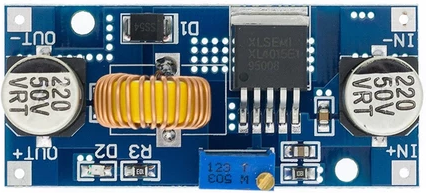
 Design with Step-down 12 To 5V 5A XL4015 in Cirkit Designer
Design with Step-down 12 To 5V 5A XL4015 in Cirkit DesignerIntroduction
The XL4015 is a high-performance DC-DC buck converter designed to step down voltage from a higher input (e.g., 12V) to a lower output (e.g., 5V). It is capable of delivering a maximum output current of 5A, making it ideal for powering devices that require a stable 5V supply, such as microcontrollers, sensors, and USB-powered devices. The XL4015 is widely used in applications like battery charging, LED drivers, and power supply modules for embedded systems.
Explore Projects Built with Step-down 12 To 5V 5A XL4015
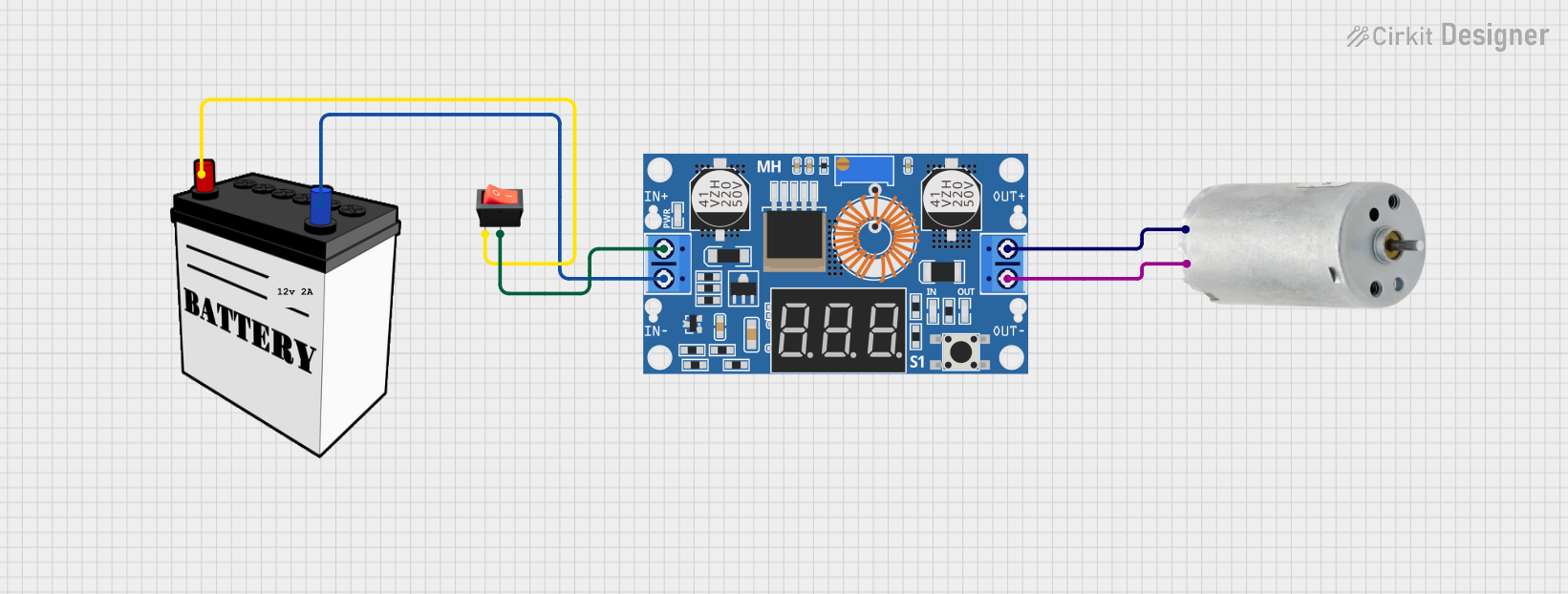
 Open Project in Cirkit Designer
Open Project in Cirkit Designer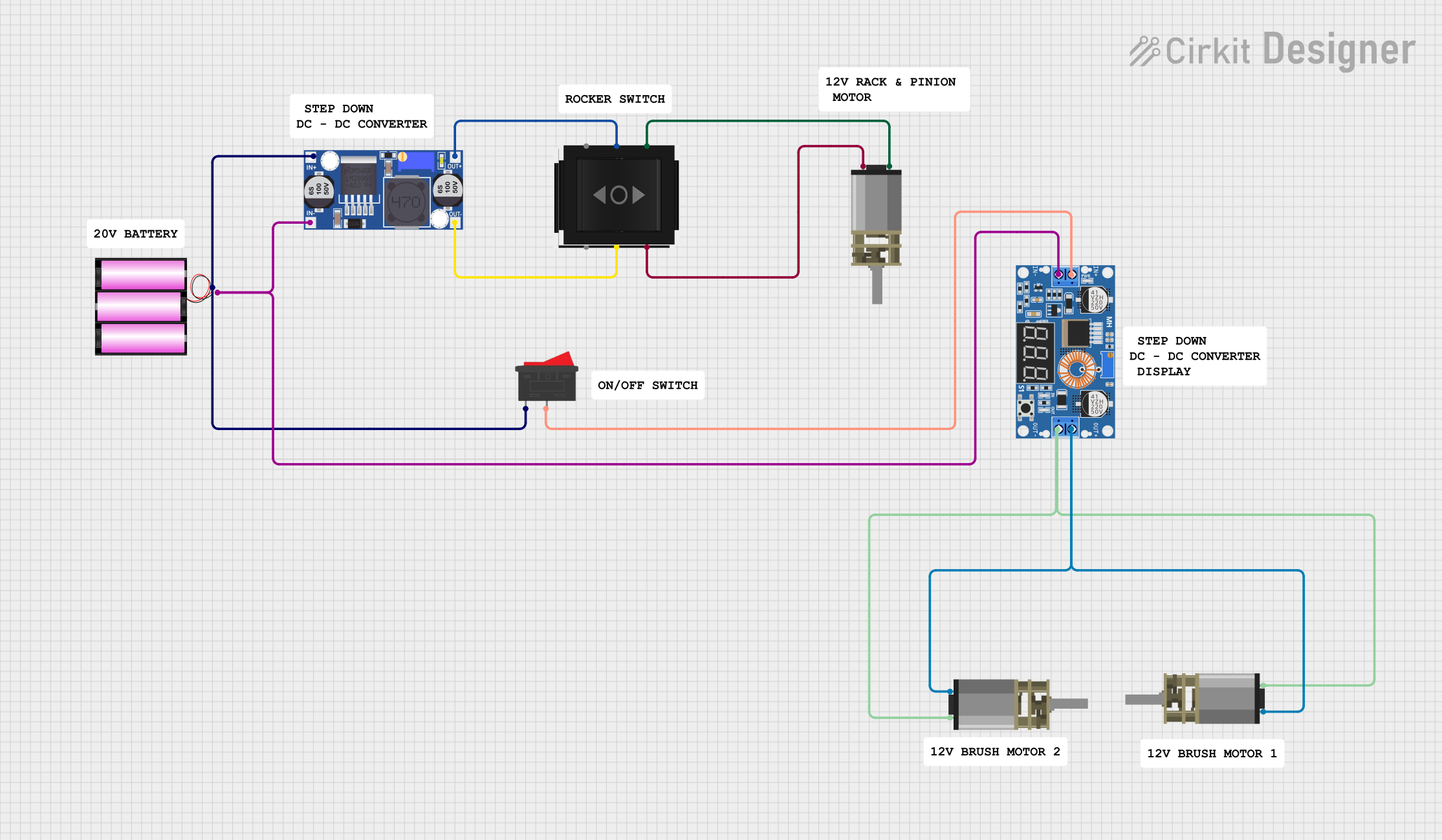
 Open Project in Cirkit Designer
Open Project in Cirkit Designer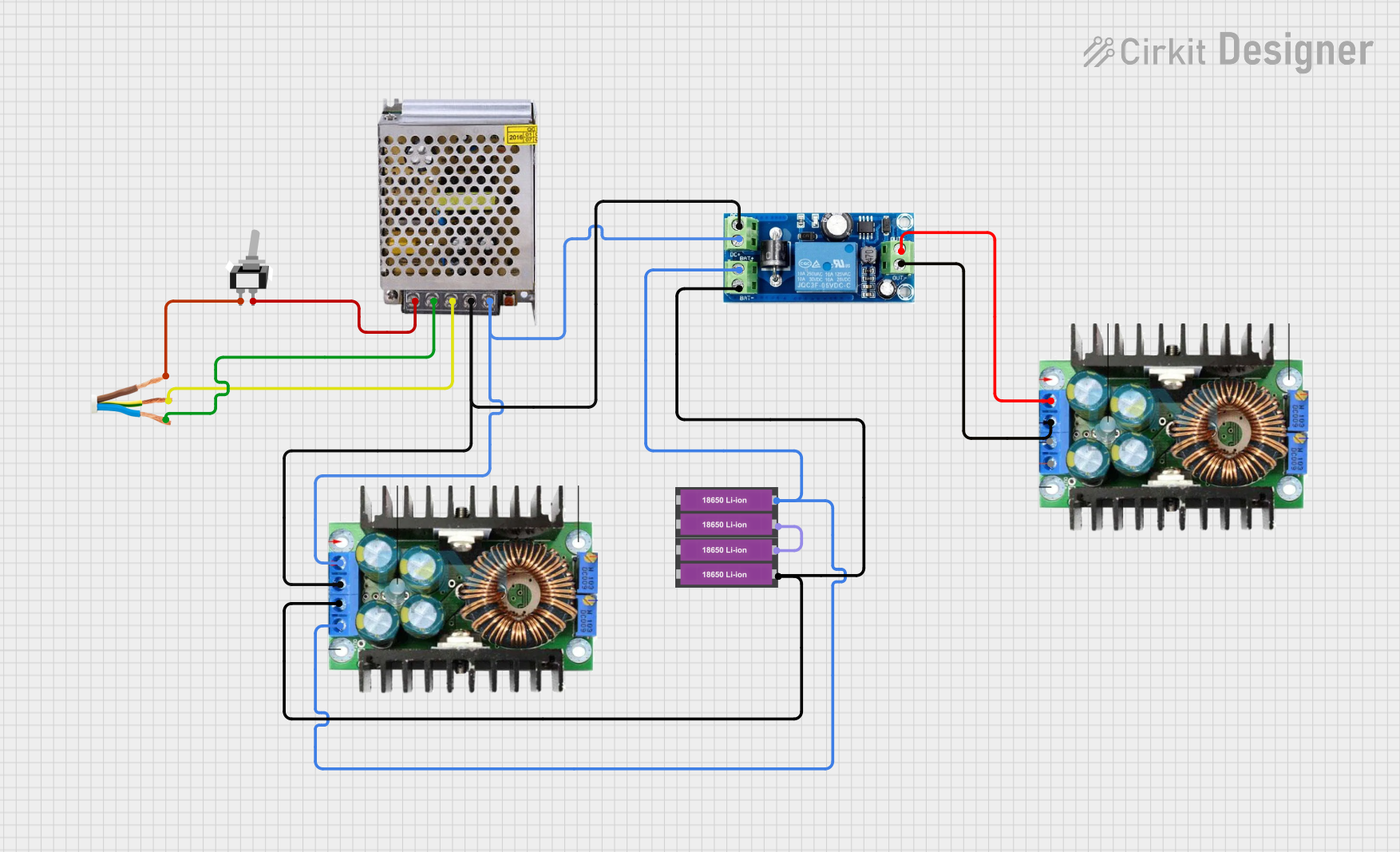
 Open Project in Cirkit Designer
Open Project in Cirkit Designer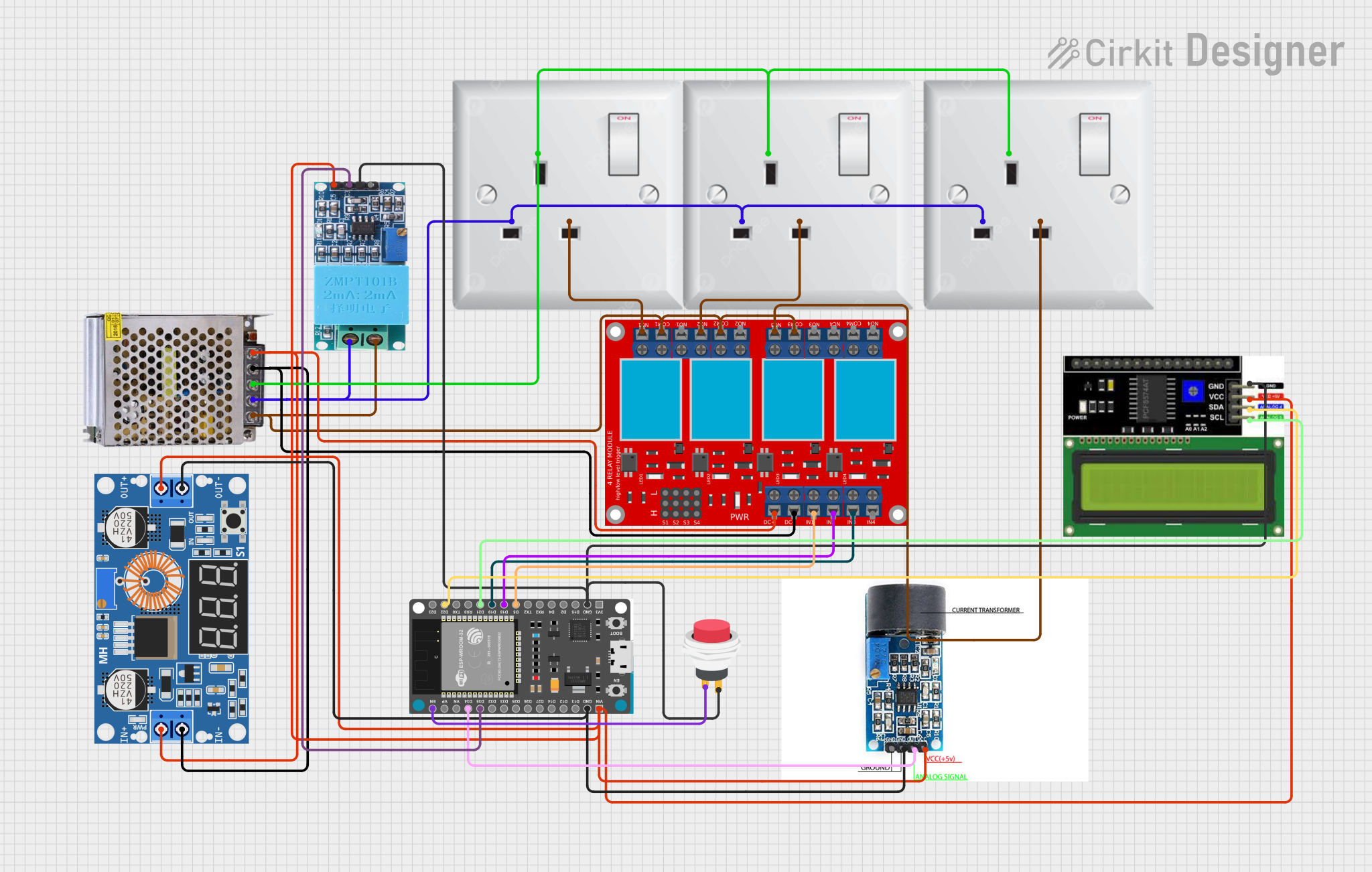
 Open Project in Cirkit Designer
Open Project in Cirkit DesignerExplore Projects Built with Step-down 12 To 5V 5A XL4015

 Open Project in Cirkit Designer
Open Project in Cirkit Designer
 Open Project in Cirkit Designer
Open Project in Cirkit Designer
 Open Project in Cirkit Designer
Open Project in Cirkit Designer
 Open Project in Cirkit Designer
Open Project in Cirkit DesignerTechnical Specifications
The XL4015 buck converter is designed for efficiency and reliability. Below are its key technical details:
General Specifications
| Parameter | Value |
|---|---|
| Input Voltage Range | 4V to 38V |
| Output Voltage Range | 1.25V to 36V (adjustable) |
| Maximum Output Current | 5A |
| Output Power | Up to 75W |
| Efficiency | Up to 96% |
| Switching Frequency | 180 kHz |
| Operating Temperature | -40°C to +85°C |
| Dimensions | 51mm x 26mm x 14mm |
Pin Configuration and Descriptions
| Pin Name | Description |
|---|---|
| VIN | Input voltage pin. Connect the positive terminal of the input power source. |
| GND | Ground pin. Connect to the negative terminal of the input power source. |
| VOUT | Output voltage pin. Provides the stepped-down voltage to the load. |
| ADJ | Adjustment pin. Used to set the output voltage using a potentiometer. |
Usage Instructions
How to Use the XL4015 in a Circuit
Connect the Input Voltage:
- Connect the positive terminal of the input power source (e.g., 12V) to the
VINpin. - Connect the negative terminal of the input power source to the
GNDpin.
- Connect the positive terminal of the input power source (e.g., 12V) to the
Set the Output Voltage:
- Use the onboard potentiometer to adjust the output voltage.
- Turn the potentiometer clockwise to increase the output voltage and counterclockwise to decrease it.
- Use a multimeter to measure the output voltage at the
VOUTpin to ensure it is set to 5V.
Connect the Load:
- Connect the positive terminal of the load to the
VOUTpin. - Connect the negative terminal of the load to the
GNDpin.
- Connect the positive terminal of the load to the
Power On:
- Turn on the input power source. The XL4015 will step down the input voltage to the desired output voltage.
Important Considerations and Best Practices
- Heat Dissipation: The XL4015 can generate heat during operation, especially at high currents. Ensure proper heat dissipation by attaching a heatsink or providing adequate airflow.
- Input Voltage Range: Ensure the input voltage is within the specified range (4V to 38V) to avoid damaging the module.
- Current Limitation: Do not exceed the maximum output current of 5A to prevent overheating or damage.
- Output Voltage Adjustment: Always measure the output voltage with a multimeter after adjustment to ensure accuracy.
- Polarity Protection: Double-check the polarity of the input and output connections to avoid damage to the module or connected devices.
Example: Using XL4015 with Arduino UNO
The XL4015 can be used to power an Arduino UNO by stepping down a 12V input to 5V. Below is an example circuit and code:
Circuit Connections
- Connect a 12V DC power source to the
VINandGNDpins of the XL4015. - Adjust the output voltage to 5V using the potentiometer.
- Connect the
VOUTpin of the XL4015 to the 5V pin of the Arduino UNO. - Connect the
GNDpin of the XL4015 to the GND pin of the Arduino UNO.
Example Code
// Example code to blink an LED connected to pin 13 of Arduino UNO
// Ensure the Arduino is powered by the XL4015 module (5V output).
void setup() {
pinMode(13, OUTPUT); // Set pin 13 as an output pin
}
void loop() {
digitalWrite(13, HIGH); // Turn the LED on
delay(1000); // Wait for 1 second
digitalWrite(13, LOW); // Turn the LED off
delay(1000); // Wait for 1 second
}
Troubleshooting and FAQs
Common Issues and Solutions
No Output Voltage:
- Cause: Incorrect input connections or insufficient input voltage.
- Solution: Verify the input voltage is within the specified range and check the polarity of the connections.
Overheating:
- Cause: Excessive current draw or inadequate heat dissipation.
- Solution: Ensure the load does not exceed 5A and attach a heatsink to the module.
Output Voltage Not Stable:
- Cause: Poor input power quality or incorrect adjustment of the potentiometer.
- Solution: Use a stable DC power source and carefully adjust the potentiometer while monitoring the output voltage.
Output Voltage Too High or Low:
- Cause: Potentiometer not set correctly.
- Solution: Re-adjust the potentiometer and measure the output voltage with a multimeter.
FAQs
Q: Can the XL4015 be used to charge batteries?
A: Yes, the XL4015 can be used for battery charging applications. However, ensure the output voltage and current are set according to the battery's specifications.Q: Is the XL4015 protected against reverse polarity?
A: No, the XL4015 does not have built-in reverse polarity protection. Always double-check the polarity of your connections.Q: Can I use the XL4015 to power a Raspberry Pi?
A: Yes, the XL4015 can step down 12V to 5V to power a Raspberry Pi. Ensure the output voltage is precisely set to 5V and the current requirement of the Raspberry Pi is met.Q: How do I know if the module is overheating?
A: If the module becomes too hot to touch or the output voltage becomes unstable, it may be overheating. Use a heatsink or reduce the load to prevent damage.